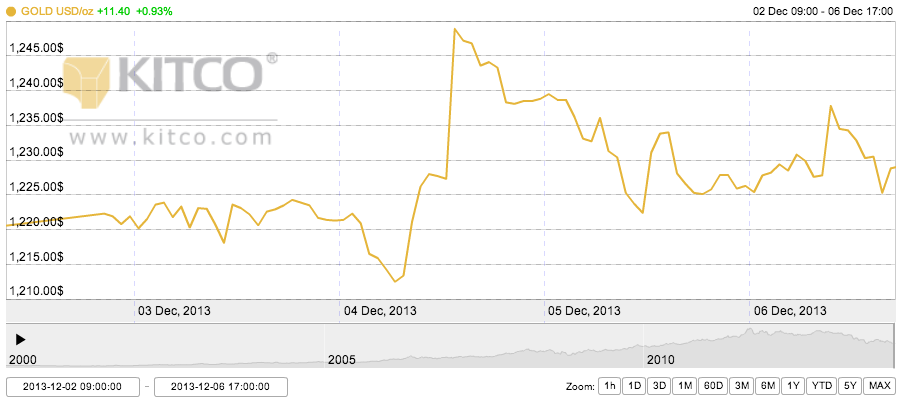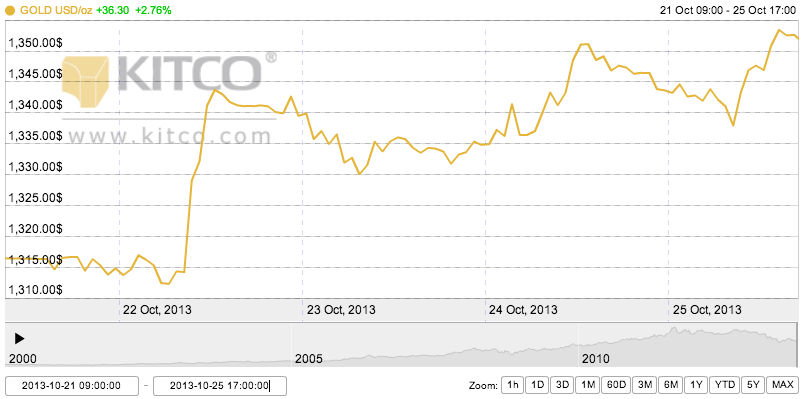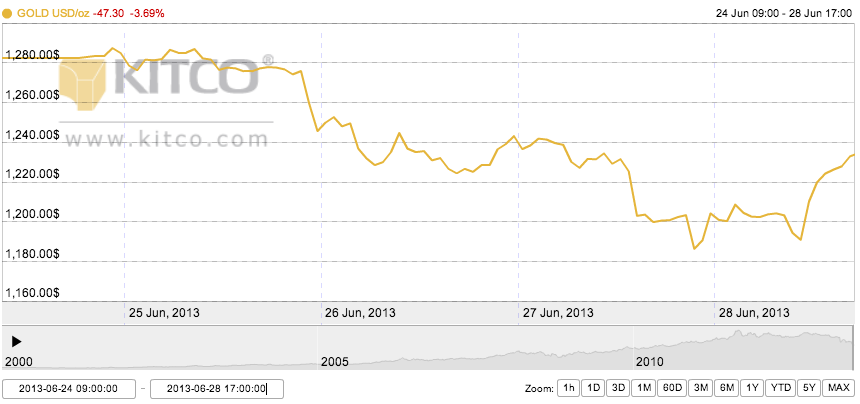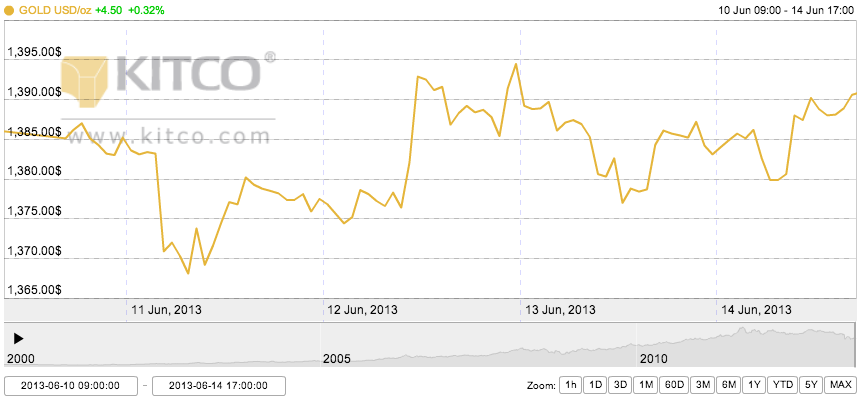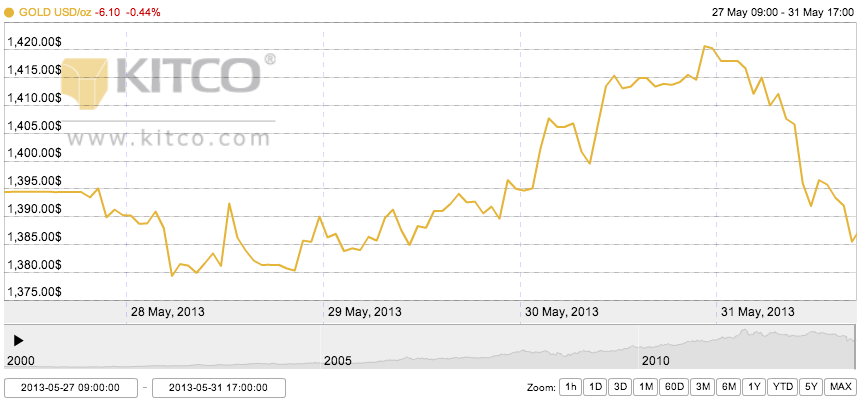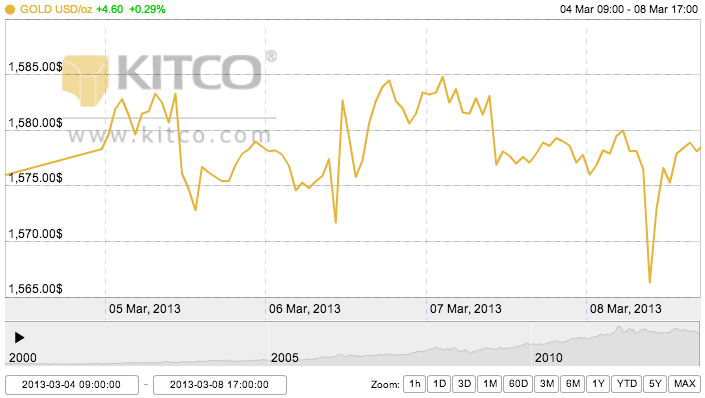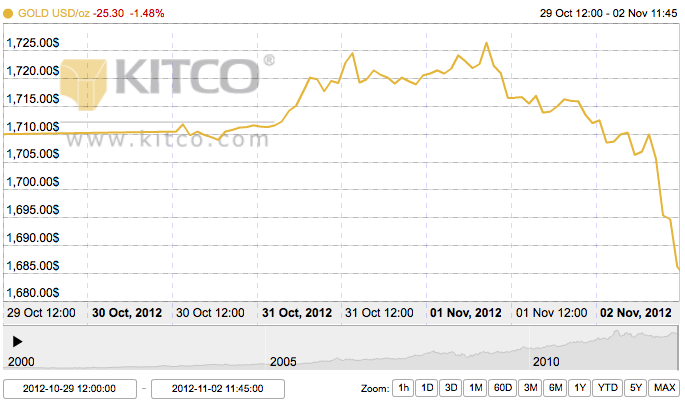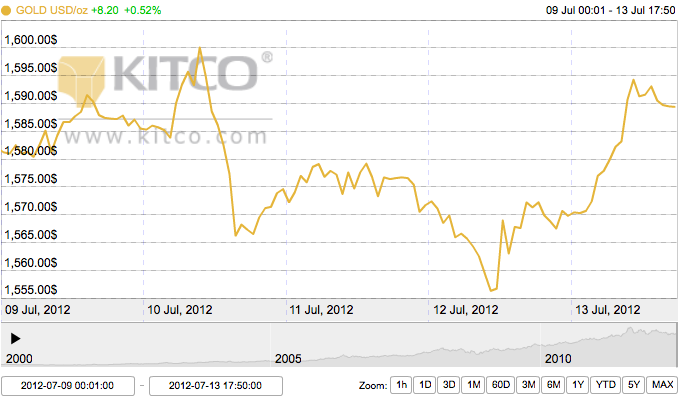Monday Open: $1,737.30
Weekly High: $1,752.20
Weekly Low: $1,718.00
Friday Close: $1,720.80
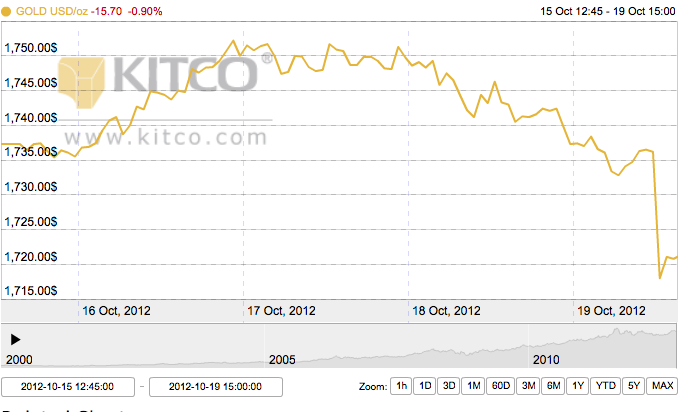
Gold opened on a one-month low this week, rallied upwards, then shot back down to close bearishly on a newer one-month low due to global economic pressures. There are a few global factors that contributed to the spikes this week, but as a whole gold is still operating at roughly $200 higher than the $1,500-$1,550 range that dominated most of the first half of 2012.
In a weak global economy, gold acts as a hedge fund and has been on the upswing for the past four years, largely due to economic restructuring of major economic states, not least of which has been the U.S. Federal Reserve’s easy monetary policies. Monday, however, China was on the forefront of traders’ minds, and gold dipped down from the weekend because data revealed that China, whose growth has been slow over the year, though still significantly ahead of the U.S., might not be considering economic restructuring if they can help it. Gold has risen in the past few months in large part due to America and Europe’s monetary loosening, and the same has been expected for China, but September data showed that China’s inflation rate dropped from 2% to 1.9% and their imports grew by 2.4%. This means uncertain trading for gold.
“The bottom line is China’s in this kind of gray area where…things aren’t as good as people want them to be but they’re not bad enough to continue to just throw money at the market,” Matt Zeman of Kingsview Financial said.
Tuesday, gold responded well after the U.S. released positive news on consumer price data, confirming that there is no current threat of significant inflation. If inflation were to appear on the horizon, the Federal Reserve may change their policies to curb price hikes, which would negatively affect gold. Without immediate fear of inflation, the Fed can continue its trend of monetary easing. The dollar also slipped a little compared to other currencies.
However, Wednesday reports on U.S. housing data served to balance out any permanent feeling of comfort regarding the dollar. Housing data was positive, implying that if that trend continues, the Fed may start to slow down their stimulus plans. Spain also received some important news; the struggling country’s credit rating was left unchanged rather than downgraded, and there is still talk of Spain requesting a bailout. Germany also joined the conversation by announcing a lower economic growth rate for 2013 than previously anticipated.
Gold traders anticipated Thursday as results from China’s third-quarter gross domestic product would be released and the European summit would begin. Data from China on Thursday confirmed the foreshadowing from Monday that China may not be as strongly considering economic boosting, since the outlook is good for economic growth.
Friday dropped gold back down below the initial trading point on Monday to a fresh one-month low. The dollar was trading higher on Friday, and the European summit meeting ended, revealing no news from Spain that the country would be asking for a bailout now. Economic uncertainties in all parts of the world contributed to an overall precarious feeling for unconvinced gold traders, causing many to flee the market by the end of the week.
Frank McGhee, precious metals trader of Integrated Brokerage Services LLC, put it this way: “People who rushed in for QE expecting to get a significant lift are getting out of the market. The longer we don’t make a new high, the more people start getting nervous about where gold is trading.”
This week experienced a 2% drop in gold, the largest weekly decline in four months.
With noncommittal leaders in Spain, a U.S. election on the horizon, a stronger Chinese economy and the season for gold buying in India approaching, yet with a weak rupee, gold seems to be caught once again in a trading limbo. However, once the price of gold breaks $1,800, interest in this precious metal will surely return, as many investors see the yellow metal continuing to perform well in the long-term.
